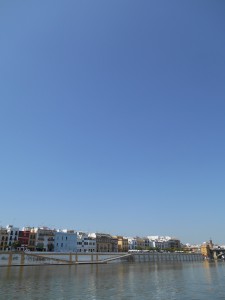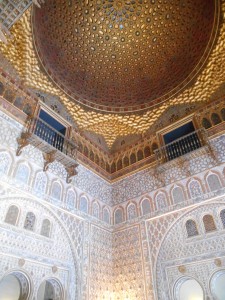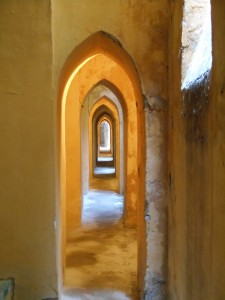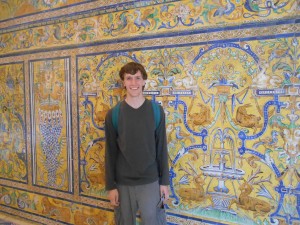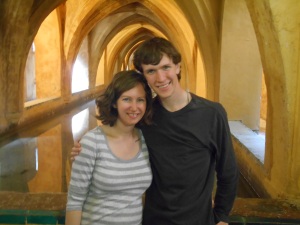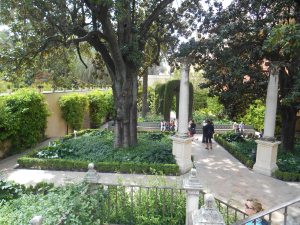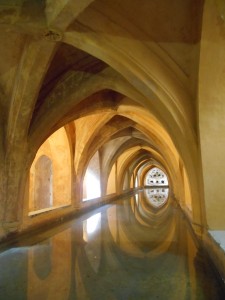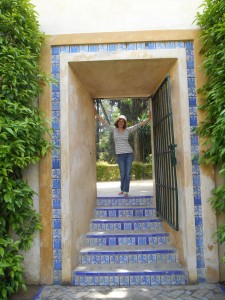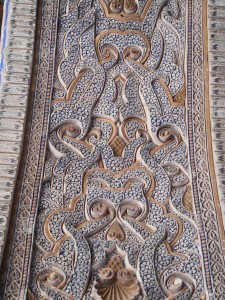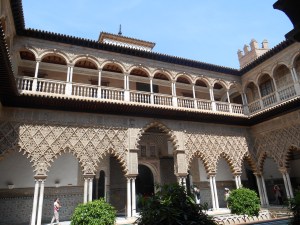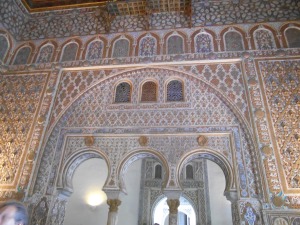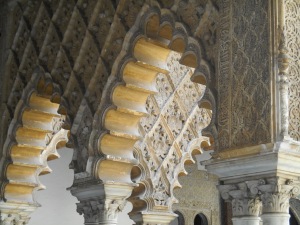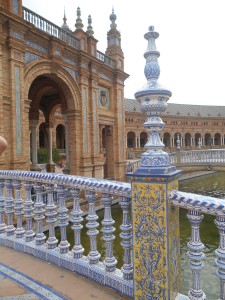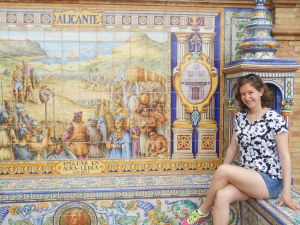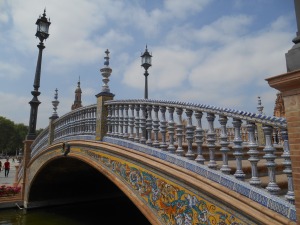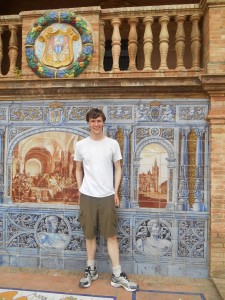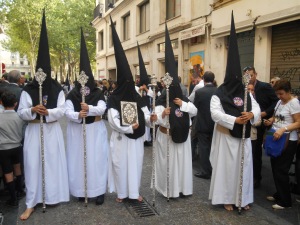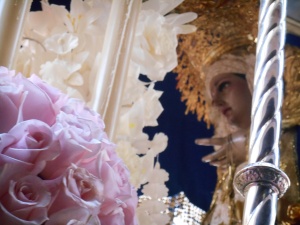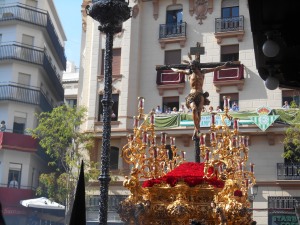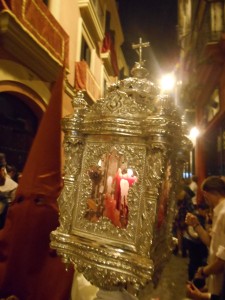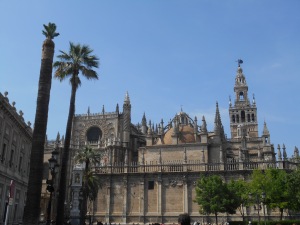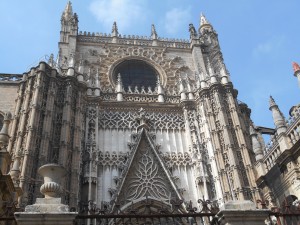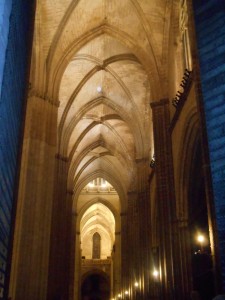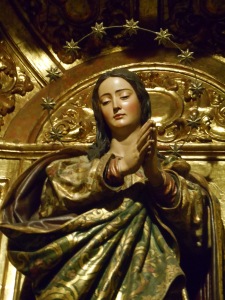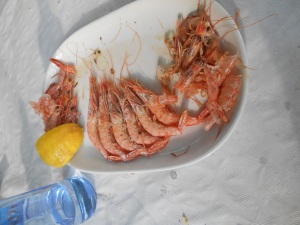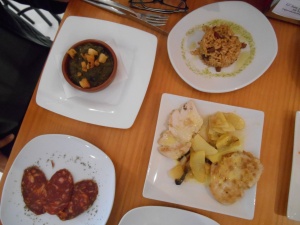We’ve made it to Sevilla, Spain! The weather here is incredible (eighty degrees in the middle of April!), the food is delicious, and the royal palace is a 1000-year-old work of beauty.
Sevilla’s Alcazar palace was built in the tenth century and changed ruling owners many times during the following centuries. Each new ruler added something new to the building, which results in a spectacular cross-cultural mix of architecture and artwork.
We also paid a visit to the Plaza de Espana. The cobblestone square has a large fountain in the center and a wide canal looping around the perimeter (wide enough, in fact, that you can traverse it by rowboat). The Plaza de Espana gets it name from the dozens of images that adorn the north wall of the Plaza, each of which represents a particular region of Spain.
We came to Sevilla for Semana Santa — the Holy Week leading up to Easter — which the city celebrates by hosting dozens of enormous, solemn processions. Every procession consists of hundreds of hooded figures who walk the streets of the city center, some carrying candles and others carrying crosses.

Walking a procession is a form of penance for many, a way of cleansing to begin the new liturgical year.
In the midst of these hooded multitudes, the processions also contain elaborate floats that each depict a scene from Christ’s passion: Jesus praying in Gethseneme, meeting the weeping women as he carries his cross, and finally crucified. Of course, the Spanish harbor a strong Catholic adoration for Mary as well, so each float that tells the passion story is followed by a sorrowful Mary.
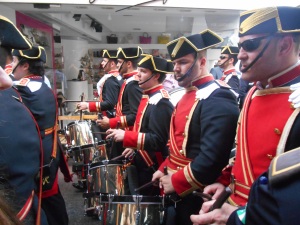
The music accompanying the floats has a huge impact on the tone of the procession, sorrowful or majestic.
(Mary fact: in Spain, Maria is the most common first name for women *and* the most common middle name for men.)
The processions are meditative. It can take an hour for one full procession to pass by, but it hardly feels that long. The floats capture the emotional power of the passion story. While I’ve seen hundreds of crucifixes and saintly statues in my life, the ones in these processions are exceptional. They’re incredibly detailed in a way that forces you to consider anew the story of Christ as one filled with human emotion. Seeing Jesus crucified in a street setting, rather than in a church, creates a powerful connection to what it would have been like to stand in the crowd when the real crucifixion happened. Another float that was particularly moving came on Saturday. Normally, the Jesus and Mary floats are separated by hundreds of penitents. This time, there was only one float, of Mary standing in front of the empty cross, the crown of thorns in her hands. She finally closed the distance between them, too late.
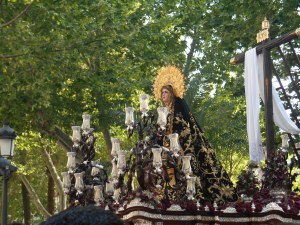
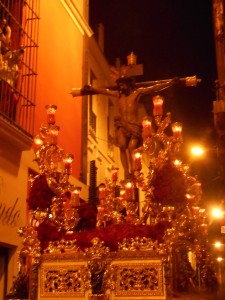
Processions by night feel more hushed and mystical than those during the day, even with the same throngs of people around.
We had a low-key Easter today. The procession was cancelled due to rain (there’s real silver and expensive fabrics on the floats, so they don’t risk damaging them). We hung around outside the doors of the Cathedral until they opened and attended a High Mass. The space is gorgeous. It was cool to experience the music from the floor-to-vaulted-ceiling organ to top off our Easter experience.
A funny story: we’re sampling a ton of delicious Spanish food (so many tapas!), and have found a few spots aimed much more at locals than tourists. As in, the menus are only in Spanish. Jessica’s Spanish is holding up well enough to manage menu navigation, so we’re ordering with confidence. One day, we were approached twice by Australian or Canadian tourists asking if we could please help translate. It’s a fun way to meet other travelers!
